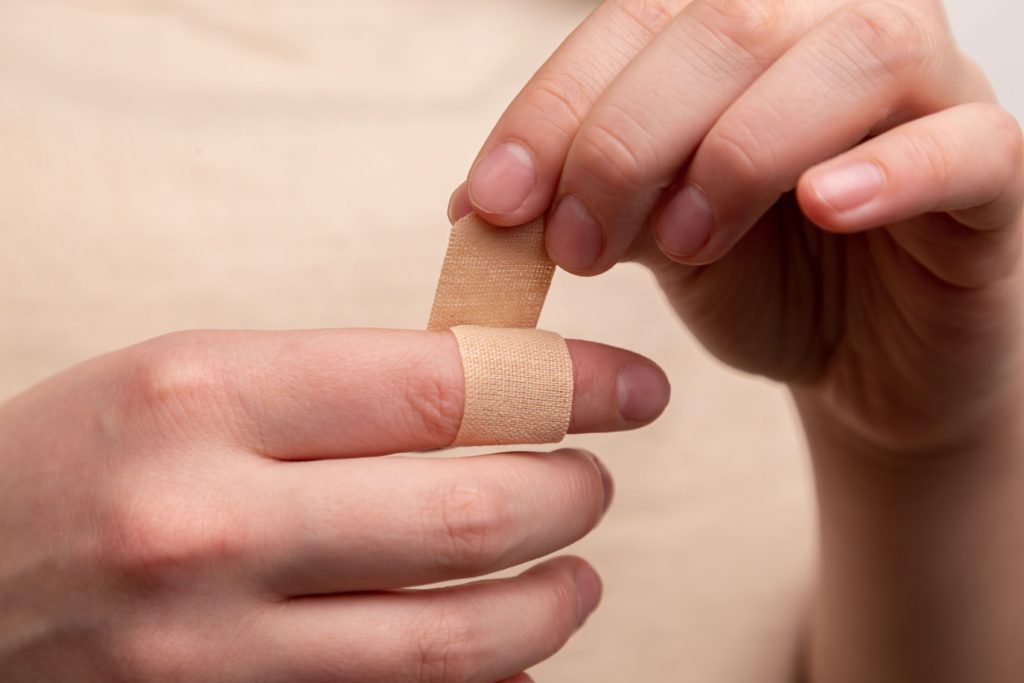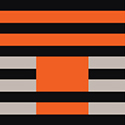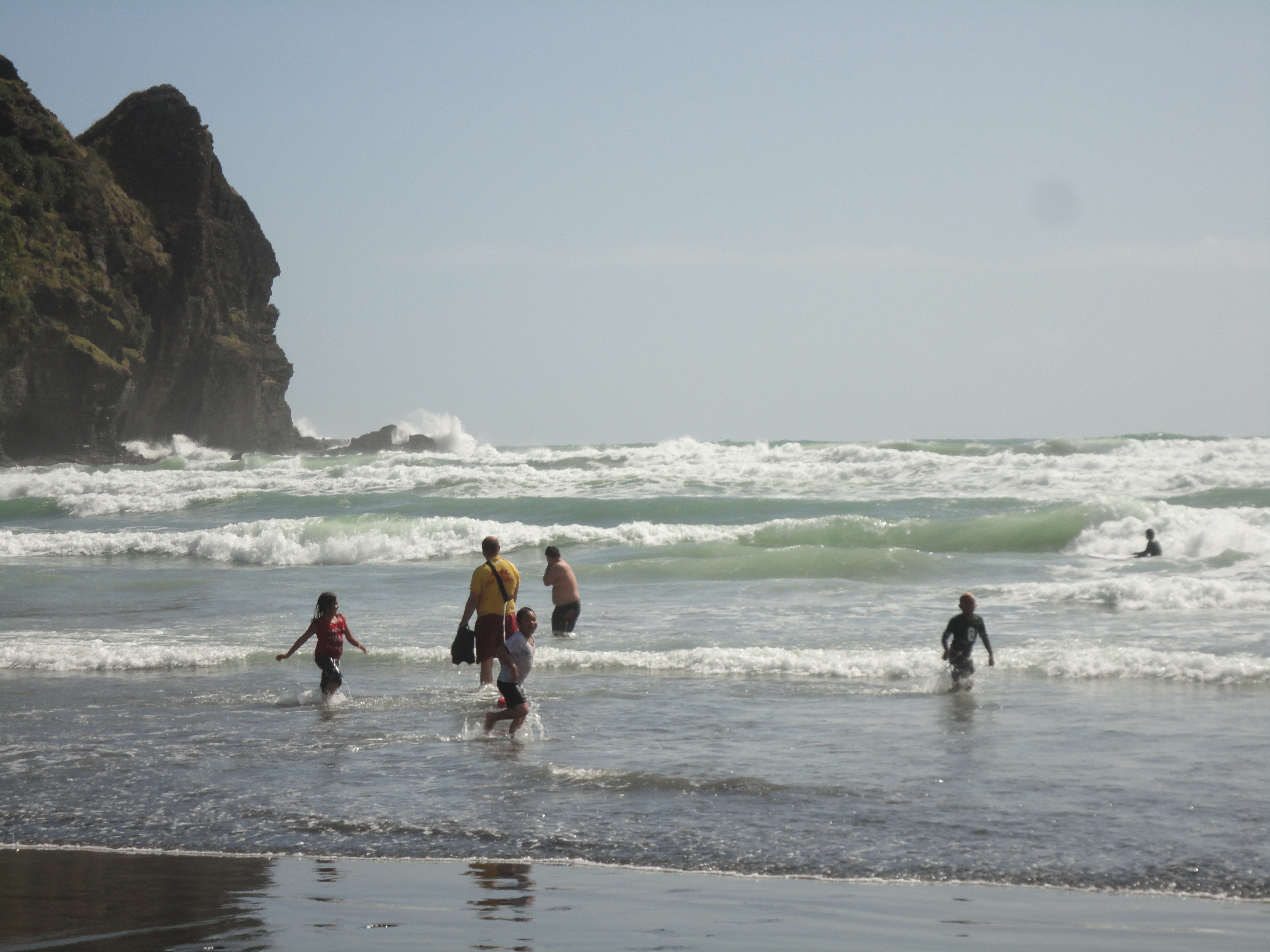by Carol S. Hyman

Like most small children, I ran to my mother whenever I was hurt. The first time I brought her a splinter too deep for tweezers, she told me to sit tight and she’d be right back. When she returned with a needle and book of matches, I was curious, especially when she struck a match and held the needle tip in the flame. It wasn’t until she explained that she was sterilizing it that I realized she intended to use it to dig the splinter out.
I was, to put it mildly, dubious, which I expressed, saying maybe the splinter would come out on its own. After all, it didn’t really hurt that much. But my mother, a nurse, would not be dissuaded. She told me to look away, grit my teeth, and not move my hand. Knowing what I do now, I might alter the instruction from “grit your teeth” to “take deep breaths” but back then “suck it up” was more in vogue than “relax and open to it.” In some quarters it still is. Only the trouble with sucking it up is that what we don’t see can hurt us. A bacteria laden splinter, untended, can become a festering infection.
These days, we know bacteria and viruses are unseen organisms that can lay low not just individuals, but whole societies. So it’s hard to remember that only a little over a century and half ago the germ theory of disease was just that — a theory, and one not generally accepted, even by educated people. But resistance to believing that something we couldn’t see was causing dreadful diseases eventually succumbed to scientific evidence. The pudding’s proof was in pasteurization, antibiotics, and the like.
COVID-19 is offering further disconcerting but instructive proof that ignorance provides no protection from unseen threats. It was working its way into the global population before we knew what was happening. And now, while we hope we are emerging from the havoc wrought by that stealthy microbe and its variants, astute observers are noting that humanity may already be in the midst of another, as yet largely unrecognized, epidemic.
This one is announcing itself in increased reports of a raft of afflictions whose cause, like germs, can be difficult to discern and whose commonality is not necessarily apparent. Anxiety, depression, addiction, auto-immune disorders, and autism are only a few of its manifestations and are perhaps only the tip of an iceberg of divisiveness and difficulties that could sink our ship if we don’t start paying attention.
One thing all these dysfunctions have in common is that their causes are unclear and we don’t yet understand how to best treat, let alone cure, them. Most don’t seem to respond to purely physical fixes. Oh sure, pharmacology can sometimes medicate away symptoms, but the variety and complexity of the ways these conditions present — in mood disorders, in systems that evolved to protect bodies turning against them, in the compulsion to seek escape in drugs and alcohol — suggest calling for new bright ideas about whether there might be something that could cause such diverse types of suffering.
Fortunately, smart people are on it and are coming up with possibilities. One of the most promising might be called “trauma theory.” Like germs, trauma has had countless moments in human history, but only recently has it started being clearly recognized and called out as a causal factor in so much of what plagues us, a development that could potentially change humanity’s trajectory as radically as did the discovery of germs.
As always, multiple factors are at work. Genetic research suggests there may be biological elements that affect how easily we are able to process and recover from challenges in life. Those and others falling into the category of nature may be things we can’t do much to change. Nurture, the other traditional component in the debate about what forms us, is more malleable. Our early development — including any abuse or neglect we may have had — certainly has lingering effects, but evidence points toward an encouraging truth: at any point in our lives we can decide to nurture ourselves going forward and mitigate some of the damage that may have been done.
One of the most knowledgeable and compelling voices addressing the unrecognized prevalence of trauma and exploring its consequences is Dr. Gabor Maté, a physician and central figure in a new documentary, Wisdom of Trauma, who points toward a different way of thinking about the subject. “Trauma is not what happens to you. Trauma is what happens inside you, as a result of what happens to you.”
Most of us are aware that our bodies are hardwired to respond to threats with fight, flight, or freeze. But we may not be aware that those responses, activated throughout our lives and often without our conscious input, leave imprints on us, and those cause discomfort. Quite naturally, we don’t like to feel discomfort and so we tend to shrug it off and try to move on.
But those past imprints — established since birth, and in some cases even before — shape how we respond to what happens in the present. If we don’t work to bring that conditioning to conscious awareness, we may feel constantly under threat which can lead to things like free-floating anxiety, or the withdrawal from engagement that marks depression, or any of a host of other symptoms of “unknown” etiology.
Unless we start working to bring these underlying factors to awareness, we won’t know how trauma might be shaping our reactions to events. Compounding the problem on a familial and societal level, we also have no idea how much trauma is determining the actions of others, since what happens inside of you depends on how you are wired. We see people acting in ways that make us shake our heads and wonder what’s wrong with them.
That’s why two other people who are blowing the whistle on trauma suggest a different approach. Instead of asking “what’s wrong with you?” when we don’t understand why someone is acting as they are — or why we ourselves do what we do — we could ask a different question. The book What Happened to You? Conversations on Trauma, Resilience, and Healing, by Dr. Bruce Perry and Oprah Winfrey, offers a straightforward explanation of how our brains develop and how the ability to regulate emotions depends on the nurture we got when young.
This might be discouraging were it not for neuroplasticity. Science has shown that we can retrain our brains, so it’s never too late. Past events shaped patterns in a part of the brain that doesn’t track past, present, and future the way we do in our everyday lives. While we may not be able to turn back the clock to get ideal early nurturing, we can, by cultivating introspection and tolerance for discomfort, learn to recognize and rewire old patterns that cause harm to ourselves and incline us to blame others for problems.
That approach would benefit not only the individuals willing to do that work, but also our societies, and humanity as a whole. Because humanity isn’t whole at this point. We are fractured and fragmented and dug in behind our individual and tribal perspectives. We seek the company of those whose patterns resemble our own and demonize or avoid those whose do not, which allows us to avoid the discomfort that would come if we were to recognize the complexity of our situations. The pandemic has, again, shown us our interconnectedness and the fact that we have global problems that need to be addressed. Not the least of these is that so many of us have no idea that we don’t have to believe everything we think.
Our minds are workable. It takes intimate and individual inner work that is rarely easy, but it’s work we must do if we want to prevent this nebulous epidemic from raging further. Knowing that something we can’t see is causing trouble is only the first step; next we need to employ a pair of underutilized human resources, mindfulness and introspection. Doing so can help us move from holding a host of conflicting opinions to developing real insight into how to solve the problems we face.
Just as, in the past, ignorance of germs let plagues rage unhindered, so ignorance of trauma may very well be creating conditions conducive to what might be considered another invisible plague. We can’t heal what we can’t feel. And we can’t feel what we’re afraid to face. Instead, it festers below the surface in our lives, producing toxic thoughts and emotions which we mistakenly believe are beyond our control.
But there’s good news: wakeful presence is the basic nature of human beings. It’s always available. Whenever we bother to connect with it, we discover that we don’t have to be afraid to feel whatever arises. Our inherent awareness, like sunlight, is a disinfectant. A wise man once encouraged leaning into the sharp points in life and I’ve found that, while it’s somewhat counterintuitive, it’s valuable advice, metaphorically and literally. Introspection is a needle that can help us get at the splintered parts of our psyches. And wakeful presence, always pristine, never needs to be sterilized.




